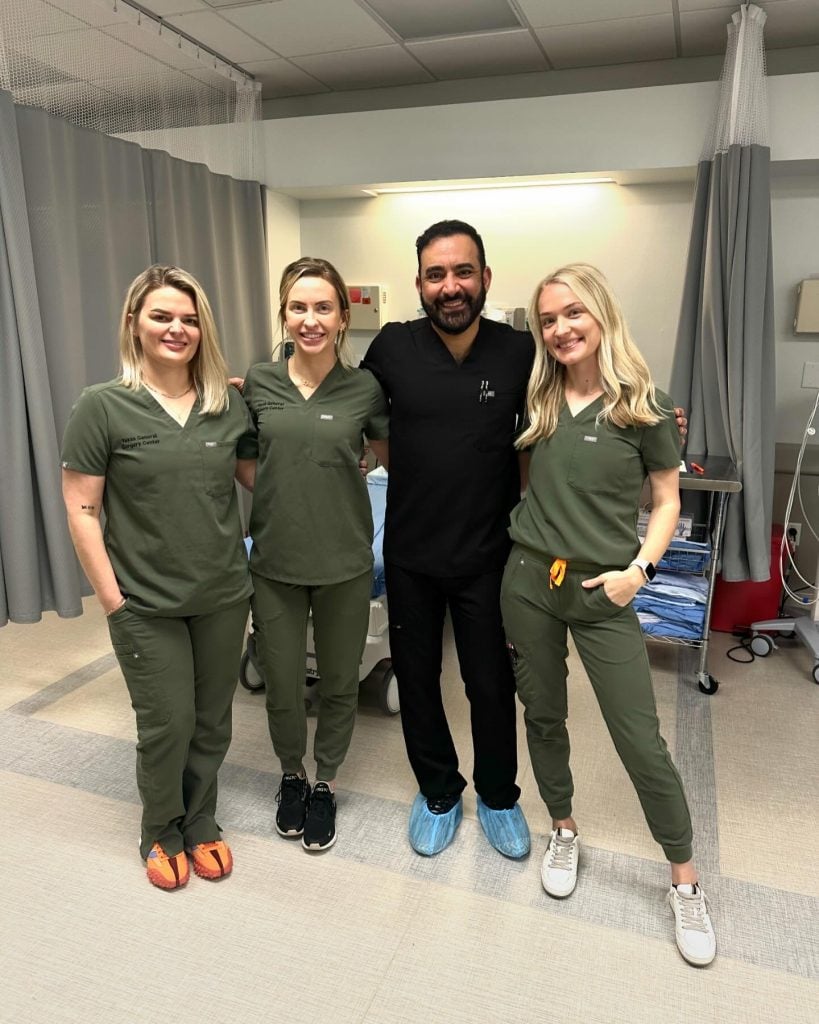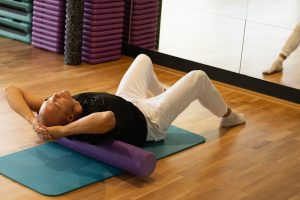Lower back pain is one of the most common complaints among adults. Whether caused by poor posture, tight muscles, or long hours of sitting, it can affect your movement and quality of life. One simple, affordable tool that can make a big difference is a foam roller. When used correctly, foam rolling for back pain can loosen tight muscles, improve blood flow, and help relieve stiffness.
Dr. Ghalambor, internist and anesthesiologist with fellowship training in interventional pain management from Massachusetts General Hospital, Harvard Medical School, explains:
“Foam rolling can be a highly effective self-massage technique for mild muscle tension and lower back stiffness. However, it must be done carefully to avoid straining the spine. Patients should focus on surrounding muscle groups rather than applying direct pressure on the lower back itself.”
Why Foam Rolling Helps with Lower Back Pain
Foam rolling works by applying gentle pressure to muscles and fascia — the connective tissue surrounding your muscles. This helps break up tight spots, improve flexibility, and support healthy movement patterns. It’s especially useful for those who sit for long periods, lift weights, or have jobs that involve repetitive motion.
Benefits of foam rolling for back pain:
- Improves circulation and oxygen flow to sore muscles
- Reduces stiffness and tension in the lower back and hips
- Supports recovery after workouts
- Enhances flexibility and posture
- Complements physical therapy and stretching routines
How to Use a Foam Roller for Lower Back Pain Relief
When learning how to use a foam roller on your lower back, it’s important to avoid direct pressure on the spine. Instead, focus on the surrounding muscles that often contribute to pain.
Step-by-step foam rolling routine:
- Warm up your muscles. Spend 2–3 minutes walking or doing gentle stretches to loosen up.
- Start with your upper glutes. Sit on the foam roller and slowly roll just above your hips. Pause when you feel a tight spot and hold for 20–30 seconds.
- Move to your lower back indirectly. Lean slightly to one side so the roller presses on the muscles next to your spine, not directly on it. Roll gently from mid-back down to the top of your hips.
- Roll your hip flexors and hamstrings. Tight hips and hamstrings can pull on the lower back. Rolling these areas can help relieve overall back tension.
- Finish with gentle stretching. Stretch your hamstrings, glutes, and lower back after foam rolling to enhance flexibility.
Tip: Perform this self-massage for lower back routine 3–4 times per week, using slow, controlled movements.
Common Mistakes to Avoid
Foam rolling is simple, but doing it incorrectly can cause more harm than good.
Avoid these errors:
- Rolling directly over your spine
- Moving too quickly without pausing on tight areas
- Using excessive pressure that causes pain
- Forgetting to stretch afterward
- Using a foam roller that’s too firm for beginners
Dr. Ghalambor advises:
“If you feel sharp or radiating pain during foam rolling, stop immediately. This may indicate nerve irritation or a deeper muscular issue that needs medical evaluation. Foam rolling should provide relief — not discomfort.”
Choosing the Best Foam Roller for Back Pain
When selecting recovery tools for back stiffness, choose a foam roller that fits your comfort level and body type.
Recommendations:
- Soft-density rollers: Ideal for beginners or sensitive backs
- Medium-density rollers: Best for moderate tension relief
- Textured rollers: Useful for deep tissue self-massage (advanced users)
- Compact rollers: Great for travel or smaller muscle groups
If you’re unsure which type is best, a physical therapy foam rolling session can help you learn proper technique before starting at home.
When to See a Specialist
Foam rolling helps relieve muscle-related discomfort, but not all back pain comes from tight muscles. If your pain persists longer than a week, radiates to your legs, or worsens with movement, seek professional care.
At NorTex Spine & Joint Institute, patients in Fort Worth, Allen, Coppell, and Garland, TX receive comprehensive care for lower back pain, including diagnostic imaging, targeted injections, and guided therapy programs.
Dr. Ghalambor emphasizes:
“Self-care techniques like foam rolling are valuable, but they should complement — not replace — professional evaluation when pain is chronic or severe.”
Transparency Statement:
While NorTex Spine & Joint provides specialized care, many reputable clinics offer similar treatments. Always seek multiple opinions before deciding on treatment.
Ready to relieve lower back stiffness?
Book a consultation with NorTex Spine & Joint Institute in Fort Worth, Allen, Coppell, or Garland, TX, to explore safe, effective treatment options for lasting relief.
Additional Resources:
https://www.mayoclinichealthsystem.org/hometown-health/speaking-of-health/7-common-low-back-pain-faq
https://www.webmd.com/back-pain/what-helps-with-lower-back-pain







